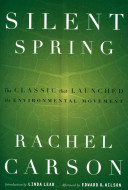Radio-Mimetic Chemicals
For mankind as a whole, a possession infinitely more valuable than individual life is our genetic heritage, our link with past and future. Shaped through long aeons of evolution, oru genes not only make us what we are, but hold in their minute beings the future – be it one of promise or threat. Yet generic deterioration through man-made agents is the menace of our time, ‘the last and greatest danger to our civilization.’
Again, the parallel between chemicals and radiation is exact and inescapable.
The living cell assaulted by radiation suffers a variety of injuries: its ability to divide normally may be destroyed, it may suffer changes in chromosomal structure, or the genes, carriers of hereditary material, may undergo those sudden changes known as mutations, which cause them to produce new characteristics in succeeding generations. If especially susceptible the cell may be killed outright, or finally, after the passage of time measured in years, it may become malignant.
All these consequences of radiation have been duplicated in laboratory studies by a large group of chemicals known as radio-mimetic or mutation-imitating. Many chemicals used in pesticides – herbicides as well as insecticides – belong to this group of substances that have the ability to damage the chromosomes, interfere with normal cell division, or cause mutations. These injuries ot the genetic material are of a kind that may lead to disease in the individual exposed or they may make their effects felt in future generations.
Notes:
Folksonomies: environmentalism adaptation mutation
Taxonomies:
/health and fitness/disease (0.594278)
/science/medicine/genetics (0.471383)
/technology and computing (0.326326)
Keywords:
normal cell division (0.981104 (negative:-0.469719)), long aeons (0.817539 (neutral:0.000000)), generic deterioration (0.804897 (negative:-0.598196)), radiation suffers (0.802980 (negative:-0.677411)), individual life (0.792179 (positive:0.272057)), genetic heritage (0.791560 (positive:0.272057)), chromosomal structure (0.783830 (negative:-0.344586)), greatest danger (0.781597 (negative:-0.595063)), Radio-Mimetic Chemicals (0.772219 (neutral:0.000000)), man-made agents (0.769448 (negative:-0.598196)), hereditary material (0.753926 (negative:-0.447808)), new characteristics (0.752165 (negative:-0.236071)), sudden changes (0.750906 (negative:-0.288311)), living cell (0.740273 (negative:-0.677411)), laboratory studies (0.737956 (neutral:0.000000)), future generations (0.733373 (negative:-0.681118)), large group (0.722776 (neutral:0.000000)), genetic material (0.709806 (negative:-0.681118)), mutations (0.555690 (negative:-0.288822)), time (0.535034 (negative:-0.598196)), injuries (0.533736 (negative:-0.679264)), ability (0.526784 (negative:-0.510256)), possession (0.494014 (positive:0.272057)), mankind (0.490136 (neutral:0.000000)), menace (0.483980 (negative:-0.598196)), insecticides (0.482524 (negative:-0.559033)), herbicides (0.481745 (negative:-0.559033)), beings (0.480323 (neutral:0.000000)), chromosomes (0.479332 (negative:-0.559033)), genes (0.478599 (negative:-0.311869))
Entities:
cell division:FieldTerminology (0.788512 (negative:-0.469719))
Concepts:
Gene (0.963195): dbpedia | freebase
DNA (0.951075): website | dbpedia | freebase | yago
Cell (0.875957): dbpedia | freebase
Genetics (0.865697): dbpedia | freebase | opencyc
Bacteria (0.742763): dbpedia | freebase | opencyc
Chromosome (0.724796): dbpedia | freebase | opencyc
Cell nucleus (0.628898): dbpedia | freebase | opencyc
Organism (0.622733): dbpedia | freebase





